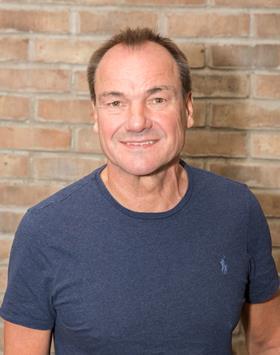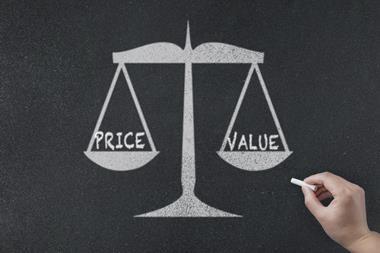With better technology and new regulations on pricing, could telematics be preparing for its time in the sun?
As of January 2022, insurers are no longer able to differentiate the price charged to homeowners and motorists based on whether they are new customers or renewing their policies. This new fair value focused regulation from the FCA represents a seismic change to how insurance policies are priced and will make it impossible for insurers to compete via new policy prices alone.
However, one way insurers can continue to offer more affordable cover than their competitors is by leveraging telematics. Mike Brockman, chief executive of telematics firm ThingCo, believes that the new, outcome-centric regulatory environment created by the FCA should place telematics technology on insurers’ “shopping lists”.
He explained: “One thing you can’t do at renewal is charge more than the new business premium. Telematics ticks all the boxes for this legislation because you would know who all the good drivers and bad drivers are. At renewal, you can give all your best drivers a stonking deal and for all your bad drivers, just make sure their new price is the same as the renewal price, which is bumped up.

“Because it’s all based on data and you know who these drivers are, it’s completely within the new rules.”
Brockman has been flying the flag for telematics technology for over a decade now – he founded telematics insurer Insure The Box in 2009 and has been preaching the benefits of more data collection ever since.
He said: “I’ve been in the industry for 40 years. Motor insurance and pricing have been my areas and the [new FCA regulations are] the biggest change I’ve ever seen in the industry.”
Informed advantages
Outside of allowing insurers to provide better rates to their less risky drivers, telematics also offers extra advantages around the ability to leverage data.
For Brockman, telematics technology allows insurers to focus on providing discounted cover to safer insurers while generating more income from worse drivers in one swoop. He explained that the worst 15% of drivers, based on his experience, generally add 30 points to an insurer’s loss ratio.
“Everyone speeds,” he added, “but speeding 30% of the time on every trip - that’s a bit excessive.
”Those people create all the claims. Insurance companies have a right to say to these guys ’you have to change your behaviour or you’re going to get a bad premium’.”
Segmenting pricing in this way is possible when detailed data is provided by telematics technology, such as the Theo devices designed by ThingCo. This device, through collecting data on location, speed, impact forces and directionality, can provide driver ratings and immediate collision reports to inform pricing decisions.
However, simply installing a device like Theo in a customer’s car after they have purchased a telematic policy does not mean that insurers’ will be able to extract better value from that customer.
Brockman explained that the cost of the device and the discount in premium must be offset by the financial benefit of the device. How this is leveraged, however, is up to insurers.
He said: “There’s all sorts of creative methods of product design – you can be more of a carrot than a stick. Telematics gives you the option to do whatever you want to do.”
This could include not renewing more dangerous drivers or implementing mileage-based products, for example.
“I would strongly recommend encouraging people with reward schemes to driver better,” Brockman added. “You have to have some inbuilt incentive to keep customers driving well, otherwise the effect [of telematics] is quite short term and you lose that asset value.

“In order for it to work, you have to create this asset value through the use of data – this improves your loss ratio and improves the retention and quality of your customers, which further improves your loss ratio. It’s a no-brainer.”
Surrogate data
Jeffrey Skelton, managing director of insurance, UK and Ireland at data firm LexisNexis Risk Solutions, was less optimistic about the potential of telematics under the FCA’s new regulatory environment.
He told Insurance Times: “The real value capture of telematics is early behavioural changes in youthful drivers. The jury’s out on whether or not telematics is going to work at a big scale, or will it continue to be a tool for educating young drivers and a punishment for bad drivers?”
While he noted that decreasing costs associated with telematics devices as a factor that may cause insurance companies to explore the technology, Skelton explained that the use of “surrogate data” may remove the need for devices at all.
He said: “Insurance companies need to ask what value does the data [provided by a telematics device] bring, what question does it answer about the profile of the risk and are there other data sources that accomplish the same thing at a cheaper price?
“If there are no claims, no speeding tickets and no other violations, what is telematics going to tell you [about a policyholder] that you don’t already know?”
This is not an argument against identifying safer drivers and providing them with more affordable cover, clarified Skelton. For him, the question is whether telematics technology is the best route to provide this data if it cannot be found via other sources.
Brockman argued that the benefits of his firm’s devices go beyond providing insurers with data. However, whether or not these benefits amid the new regulatory environment will create a more telematics focused motor insurance market remains to be seen.
PASS NOTES
Elon Musk reveals Tesla Insurance telematics offering
Elon Musk, the billionaire founder and chief executive of electric car manufacturer Tesla, has revealed key details about the firm’s new telematics insurance product during the company’s Q1 2022 earnings call in April 2022.
According to the Tesla Insurance website, its new insurance product has been designed specifically for Tesla drivers and utilises technology already installed within Tesla vehicles, as opposed to other telematics products that require the insertion of a specific device.
Musk explained that, as a manufacturer, driving and accident data was especially useful to Tesla because this information could be fed into the design of future cars and software.
He said: “Most accidents are minor, but how do you have those accidents occur less frequently? And how do we make the repair associated with that accident superfast?”
Tesla Insurance is currently only available in a selection of US states – Arizona, California, Colorado, Illionois, Ohio, Oregon, Texas and Virginia. It has been designed to reward safe driving - something Musk said could be encouraged by real-time feedback on driving performance.
Musk added that Tesla drivers who signed up to Tesla Insurance would be graded on their monthly driving performance, with monthly scores impacting the following month’s premium. Customers are then able to monitor their scores throughout the month via the Tesla app, which also allows them to make claims, schedule repairs, or request roadside assistance.
Tesla specified that users’ safety scores would not be impacted by the number of miles or hours driven, although these factors would be taken into account when calculating a premium.
The company added that it would provide cover for multiple vehicles, including for customers with a Tesla vehicle and another non-Tesla vehicle they wished to insure.
Hosted by comedian and actor Tom Allen, 34 Gold, 23 Silver and 22 Bronze awards were handed out across an amazing 34 categories recognising brilliance and innovation right across the breadth of UK general insurance.




















































No comments yet